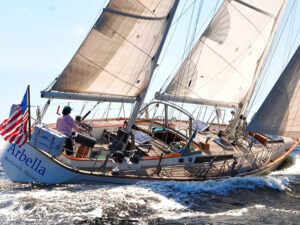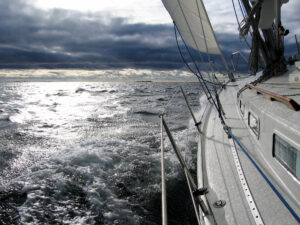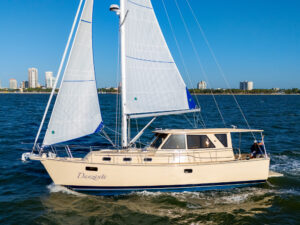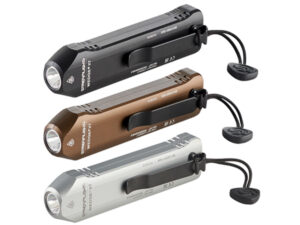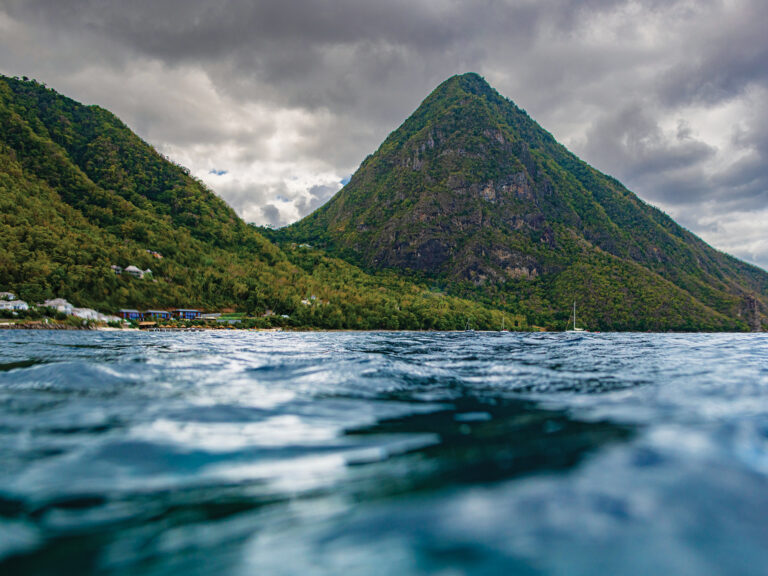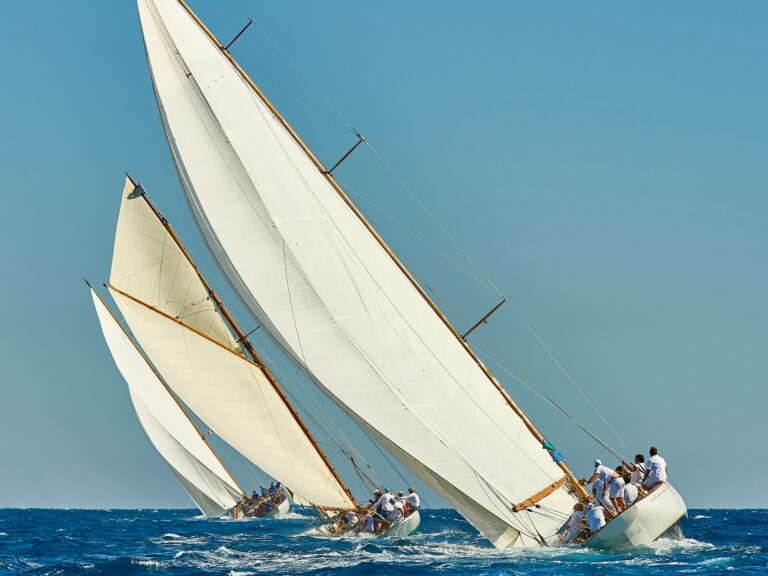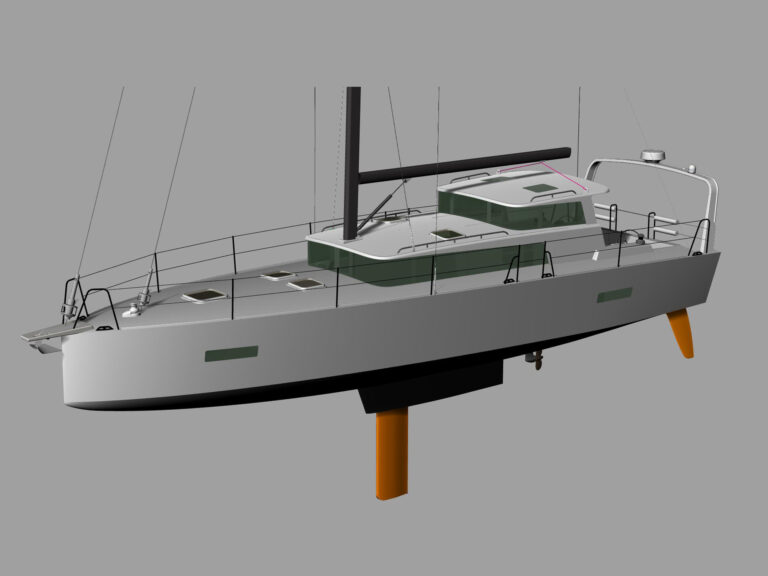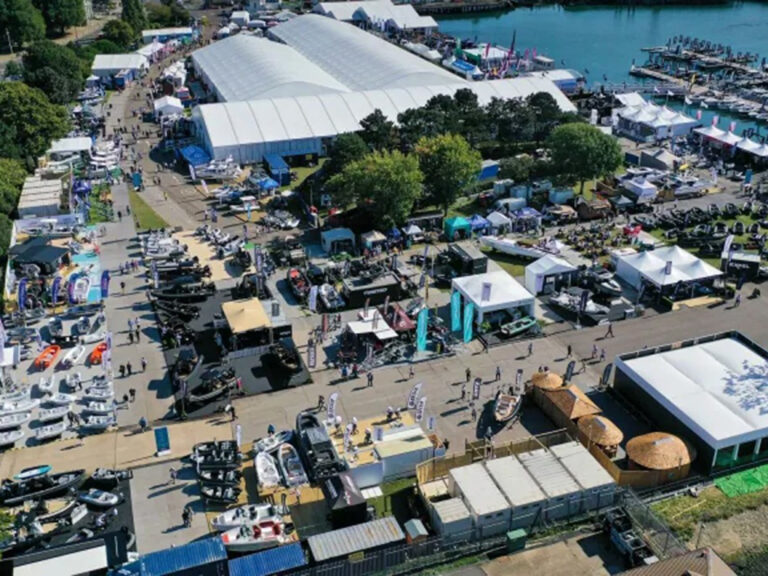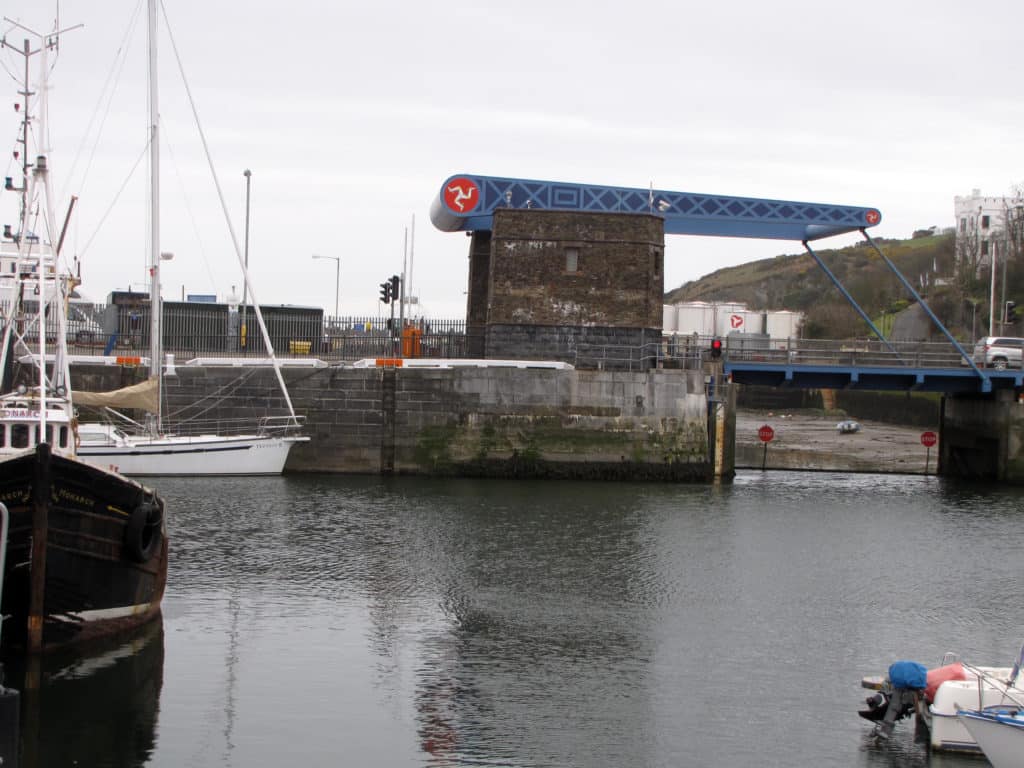
The small but fiercely proud Isle of Man lies off the west coast of Britain in the Irish Sea. My partner, Larry, and I had made our way there after a brief stop in Dublin. A miserable weather forecast convinced us that it would be best if we tied up Traversay III, our Waterline 43, in the inner harbor in the middle of Douglas, the island’s main town. The inner harbor can be accessed only at high tide, and a sill is raised up to keep the water from flowing out during low tide. A traffic bridge over the sill is raised to allow boats to pass during high tide.
We wedged ourselves into the only available spot, right next to the bridge abutment. A few days went by very pleasantly, with some nice meals ashore and stops to see the castle, the Morgan car rally and other local sights. When the time came to leave, Larry planned to spring the bow out and use the inflow of water just before the high tide to turn our bow off the bridge and send us farther into the harbor. We could then circle inside the harbor while the bridge opened and approach it at 90 degrees.

Unfortunately, we didn’t realize that there had been a lot of rainfall previous to our arrival. The flow of the overburdened river into the harbor more than offset the inflow of the high tide. Instead of turning out, the bow resisted all efforts to maneuver away from the bridge. Our steel boat proceeded toward the stationary boats on the other side, and we were in danger of ramming them. The bridge operator saw us moving and opened the bridge, perhaps thinking that we’d go through sideways. This didn’t help, as the length of our boat is longer than the bridge opening was wide. We now had the unenviable choice of ramming the other boats or hitting the bridge.
Larry decided that making a controlled “flight” into the bridge would do the least damage.
So that is what he managed to do. As the port bow sat against the bridge abutment, the current pivoted the stern around to point to seaward. The damage amounted to a little missing paint and a permanent scratch on our metal toerail. With a full load of car passengers watching us, we made an inglorious exit — backward — under the bridge. As we turned around to depart, the harbor master had the temerity to radio us and ask, “Have you damaged my bridge?”
— Mary Anne Unrau

